*NURSING > STUDY GUIDE > NR283 Pathophysiology Study Guide for Exam 1; A+ Latest Solution Guide, (2019/20) Chamberlain Colleg (All)
NR283 Pathophysiology Study Guide for Exam 1; A+ Latest Solution Guide, (2019/20) Chamberlain College Of Nursing.
Document Content and Description Below
NR283 Pathophysiology Study Guide for Exam 1 Chapter 1 1. Describe the cellular adaptations made in each of the following processes: atrophy, hypertrophy, hyperplasia, dysplasia, and metaplasi... a. 2. Discuss causative factors of each of the above cellular adaptations. 3. Identify the most common cause of cellular injury. 4. Describe cellular injury caused by infection and inflammation. 5. Describe the major mechanism of tissue damage caused by the chemical injury. 6. Discuss the manifestations of the four major types of necrosis, and give examples of the tissue types affected by each type of necrosis. 7. Discuss apoptosis. 8. Discuss the types of tissue necrosis. Chapter 2: Fluids and Electrolytes, Acids and Bases 1. Discuss the two functional fluid compartments of the body. 2. Discuss the ways water moves between plasma and interstitial fluid. 3. Describe the causation, pathophysiologic process, and clinical manifestations of edema. 4. Discuss the regulatory processes for sodium and water balance in the body, including the role of antidiuretic hormone, renin-angiotensin-aldosterone 5. Identify the basic causes and clinical manifestations of hypernatremia, hyponatremia, hyperkalemia and hypokalemia, hypocalcemia, hypercalcemia 6. Discuss the causes, clinical manifestations, complications of water deficit (hypovolemia). 7. Discuss the causes, clinical manifestations, complications, of water excess hypervolemia). 8. Discuss the role of hydrogen ion concentration in cellular function and dysfunction. 9. Explain how the lungs and the kidneys regulate acid-base balance. 10. Differentiate between respiratory acidosis, respiratory alkalosis, metabolic alkalosis, and metabolic acidosis by causes and mechanisms of compensation. Chapter 5: Inflammation * Physiology of inflammation; definition of inflammation; causes; and steps of inflammation Physiology - Definition - 1. Pathophysiology of inflammation (acute vs. chronic); local effects and systemic effects of inflammation (including clinical manifestations); complications of acute and chronic inflammation. Know classifications of burns and signs and symptoms Discuss the consequences of body fluid shifts, cardiovascular compromise, and immunologic alterations related to severe burn injuries. Chapters 6 & 7: Immune/Infection 1. Know and understand factors for bacterial resistance 2. Nosocomial infection 3. Know what are the different classes of infectious microorganisms and examples? 4. Understand the 4 types of hypersensitivity, know pathological process, and examples Table 7-5 (p. 122) 5. Anaphylactic shock: risk factors, clinical manifestations, pathological process, complications a. Pathophysiology b. Signs and Symptoms c. Treatment 6. Know clinical manifestations of infection 7. Know risk factors, clinical manifestations of HIV/AIDS i. infections and certain forms of cancer. b. Clinical manifestations i. Vary among individuals, and differences are also apparent among men, women, and children a. some are asymptomatic 2. Second (latent) phase: demonstrate no clinical signs; some have lymphadenopathy or enlarged lymph nodes 3. Final acute phase: serious complications 8. Know pathological process and clinical manifestations of Systemic Lupus Erythematosus (SLE) 9. Active vs. Passive Immunity 10. Allergy, Autoimmune Chapter 20: Cancer 1. Differentiate benign from malignant tumors. Table 20-2 (p. 550) 2. Identify the importance of tumor markers. 3. Define oncogene, tumor suppressor gene 4. Describe risk factors of cancer and know examples (TABLE 20-3) 5. Know and understand metastasis and how cancer is spread 6. Describe staging system TNM 7. Describe the effects associated with cancer AND cancer treatment. Chapter 28: Environmental Hazards * Describe why smoking and exposure to radiation are major risk factors for cancer and how they alter cellular structure and function and know examples of cancers - * Effects of environmental hazards on cells, tissues, organs - gums adjacent to the teeth > Pesticides > Asbestos > Ionizing radiation > Carbon monoxide Chapter 8: Integumentary 1. Describe the structural layers and primary function of the skin. 2. Discuss risk factors, pathological process, clinical manifestations of pruritus. 3. Compare and contrast the various forms of dermatitis. 4. Describe risk factors, pathological process, clinical manifestations of: discoid lupus erythematosus, Pemphigus, tinea, candidiasis, herpes zoster, scleroderma, Urticaria, impetigo, folliculitis, furuncle, cellulitis, carbuncle, leprosy, acute necrotizing fasciitis, HPV, Warts, scabies, Pediculosis 5. Describe the incidence, risk factors, and manifestations of cancers of the skin. 5/16 In Class Activity: 1. Skin controls body temperature, first line of defense, active in sensory perception 2. Vesicle: thin walled and fluid-filled (not pus) 3. Select all the changes in skin of an elderly patient 4. Pruritus 5. A young mother comes in with complaints of a skin disorder which is causing her physical and emotional pain. 6. In this autoimmune disorder in blisters form initially in the oral mucosa. This is 7. In this bacterial infection caused by group a strep bacteria, there is an extremely rapid tissue invasion resulting from reduced blood supply to the tissues and the secretion of protease enzymes that destroy tissue. This… 8. These are benign lesions caused by HPV 9. This is a painless, malignant tumor of the epidermis; sun exposure is a major contributing factor. The lesions are found on exposed areas of the skin, such as the face and neck 10. Patient comes in with small, pink, translucent shiny, pearly bump on his face. This is a clinical manifestation of…. 11. Infestation of the hair/scalp by tiny insects. Clinical manifestations include itching and nits on hair shaft. 12. An increase in muscle size after long term resistance training is… 13. Examples of signs 14. Malignant tumors differ from benign tumors in which they are 15. The nurse is admitting a client with potassium level of 7.0 (hyperkalemia). The nurse knows that this is the result of which of the following conditions: 16. The client with heart failure has a sodium level of 160 (hypernatremia). Which clinical manifestations does the nurse expect to see? 17. What electrolyte excess may result in the formation of kidney stones? 18. On morning assessment of your pt you notice that fluid is starting to accumulate in his abdominal tissue. History of liver failure. 19. A client who has been vomiting, becomes dizzy while standing up to go to the bathroom. After assisting the client back to bed, the nurse notes that the blood pressure is low and heart rate is high. The patient ahs... 20. Patient who is having a panic attack and hyperventilation is at risk for 21. Which cells provide protective responses during inflammation? 22. Ten days after receiving a bone marrow transplant, a patient develops a skin rash on his palms, and soles, jaundice and diarrhea. What is the most likely etiology of these clinical manifestations? 23. A patient comes into the hospital presenting symptoms that include urticaria and bronchoconstriction. The nurse knows this client is going into anaphylactic, which is the reaction of the immunoglobulin ? 24. Blood transfusion reactions, and autoimmune diseases like pemphigus vulgarius, Bullous pemphigoid, [Show More]
Last updated: 1 year ago
Preview 1 out of 24 pages
Instant download
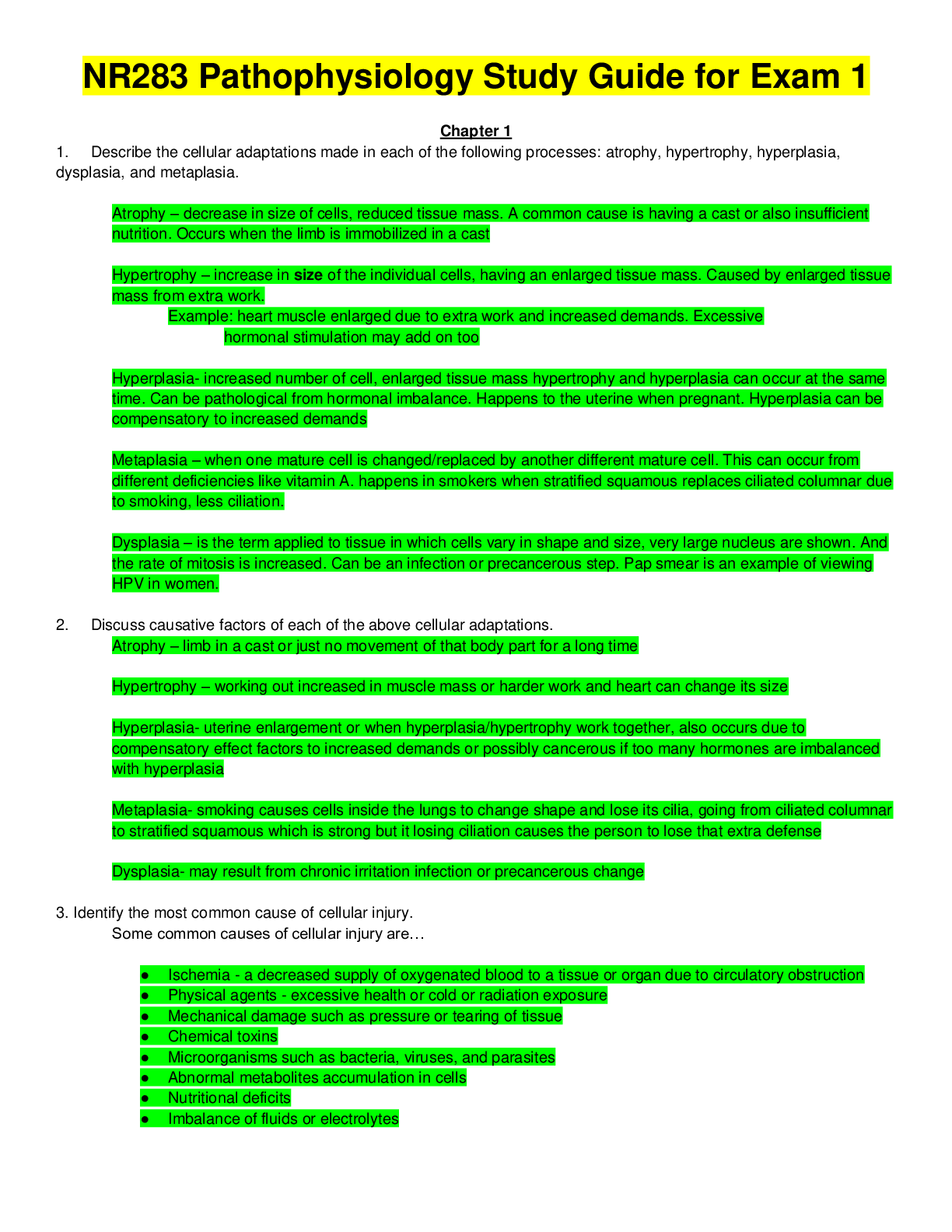
Buy this document to get the full access instantly
Instant Download Access after purchase
Add to cartInstant download
Reviews( 0 )
Document information
Connected school, study & course
About the document
Uploaded On
Feb 06, 2020
Number of pages
24
Written in
Additional information
This document has been written for:
Uploaded
Feb 06, 2020
Downloads
0
Views
60

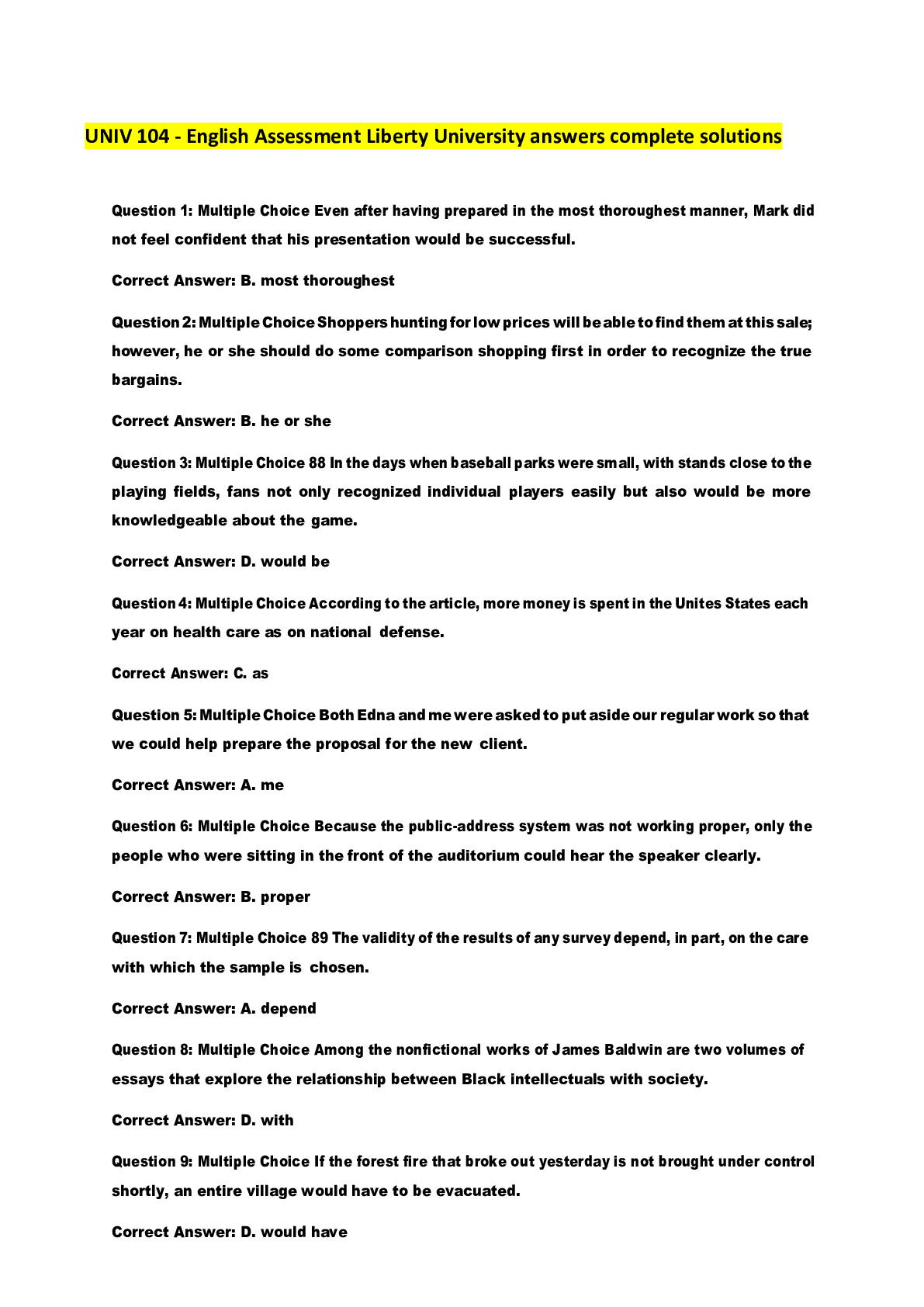
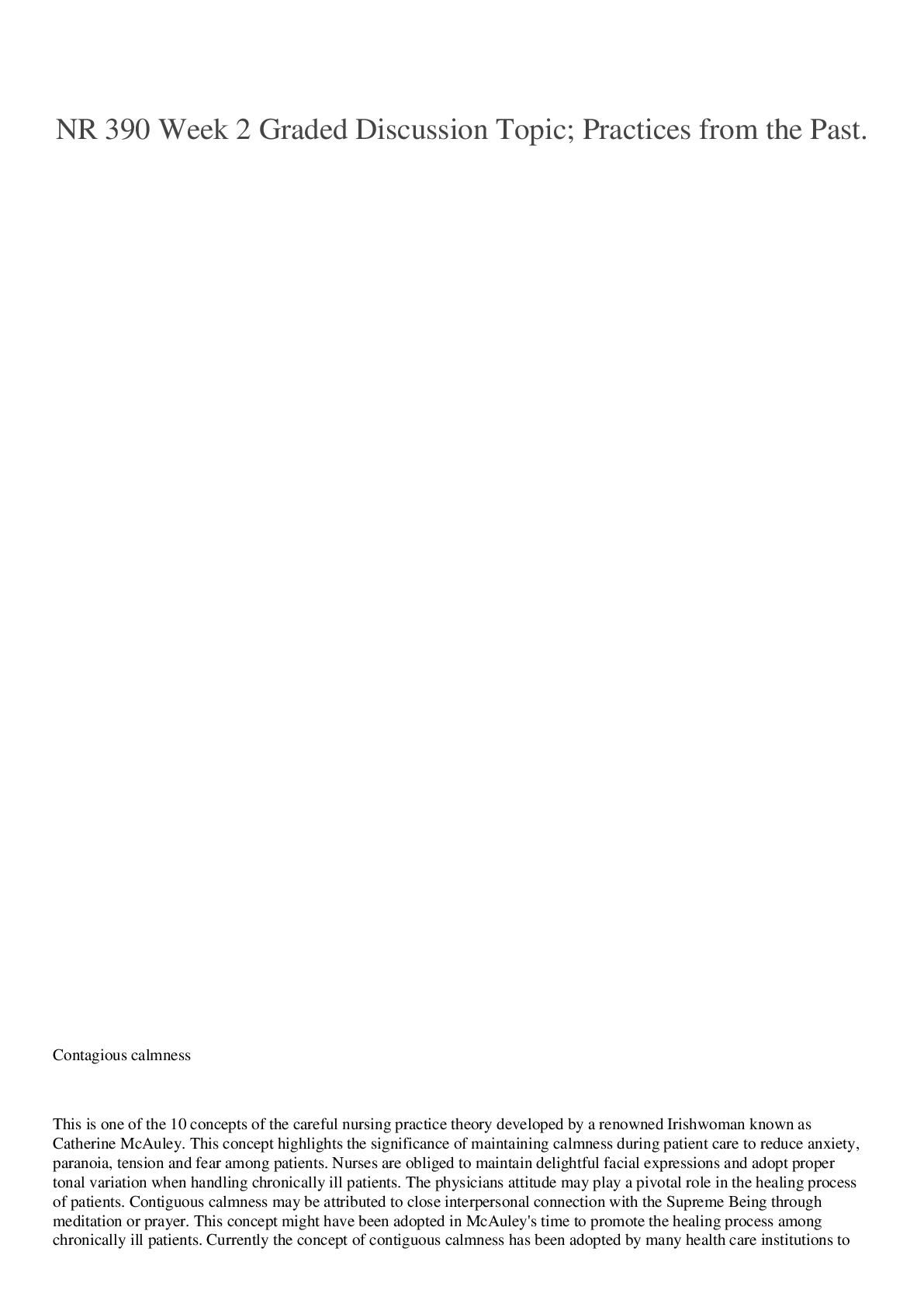
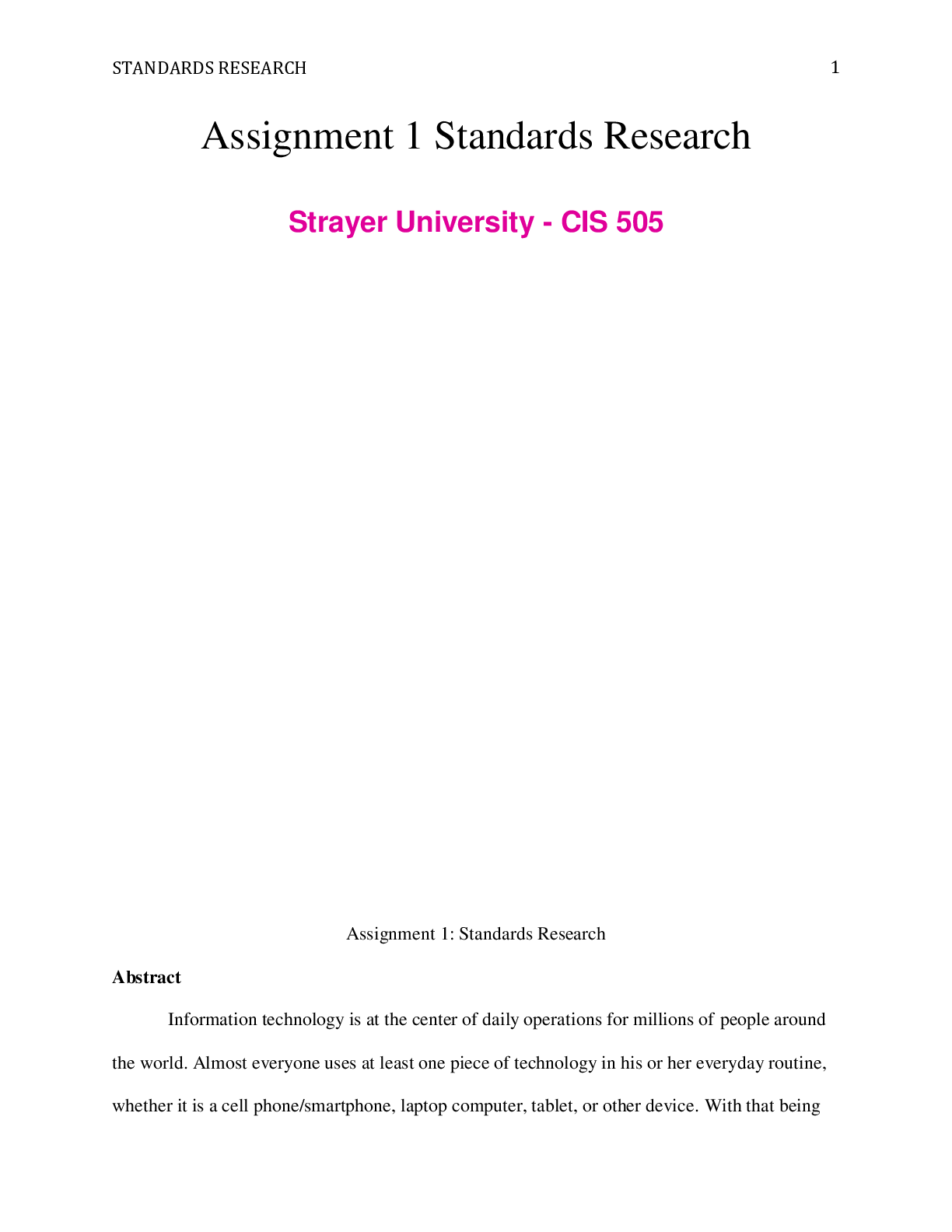

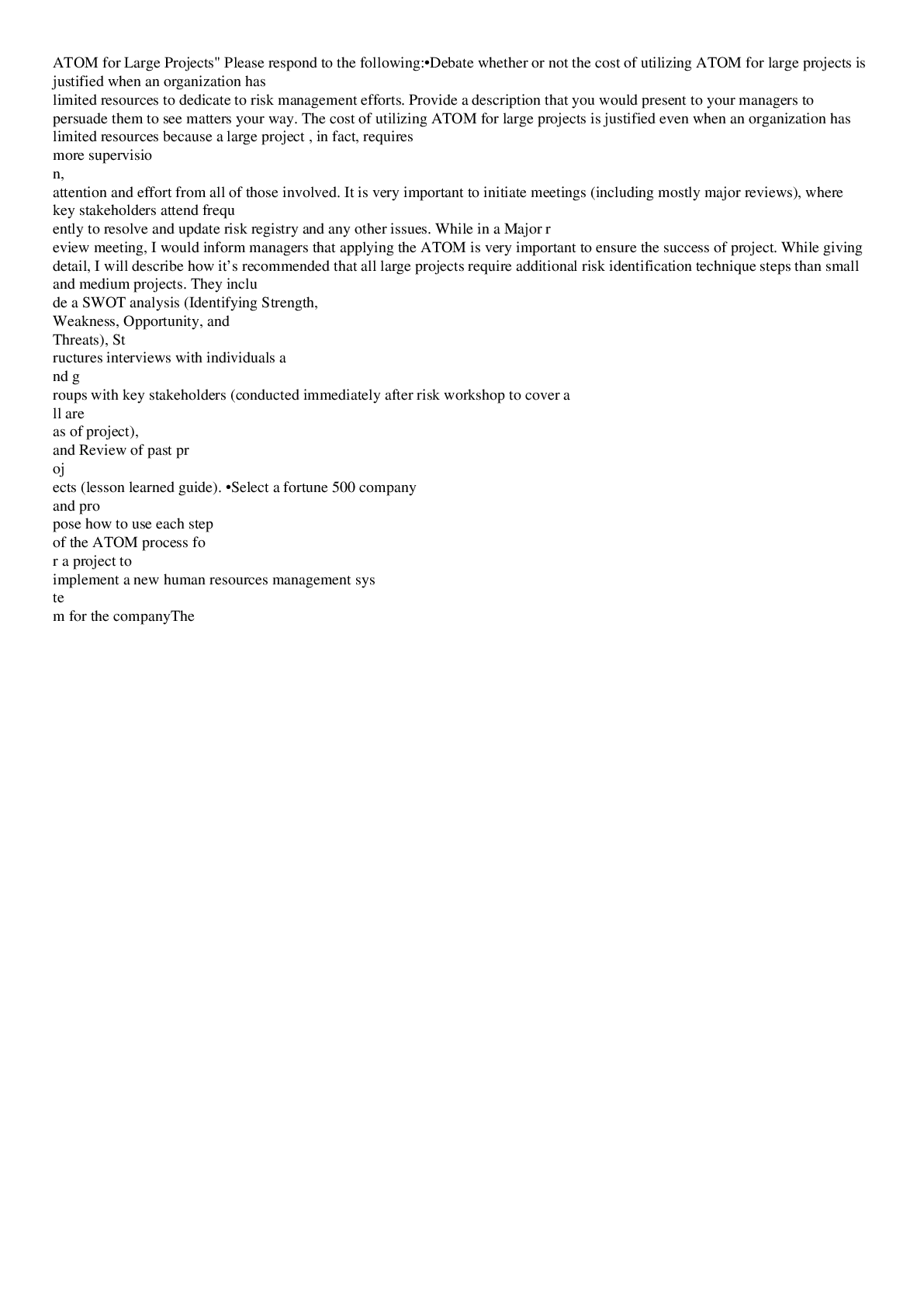
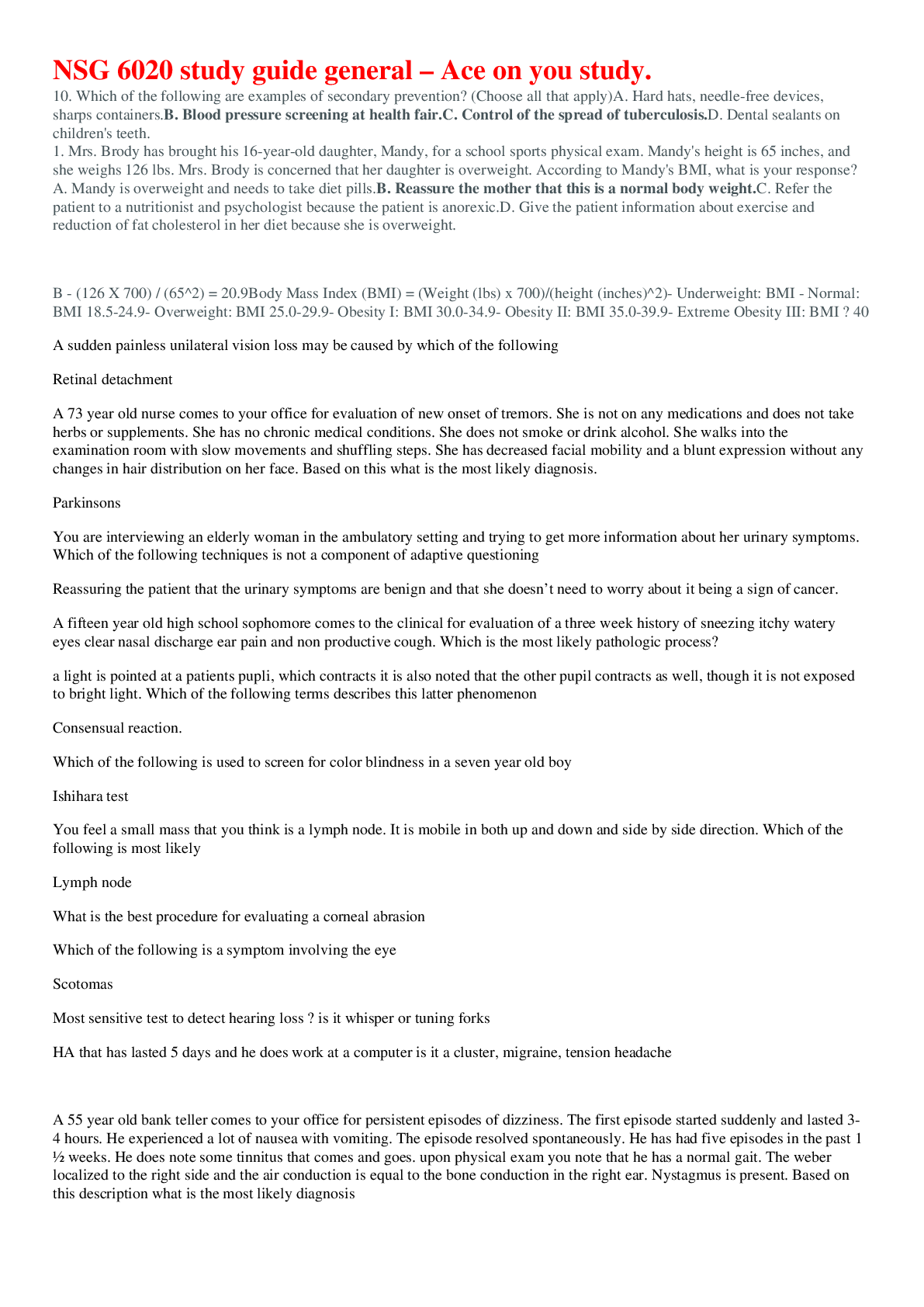
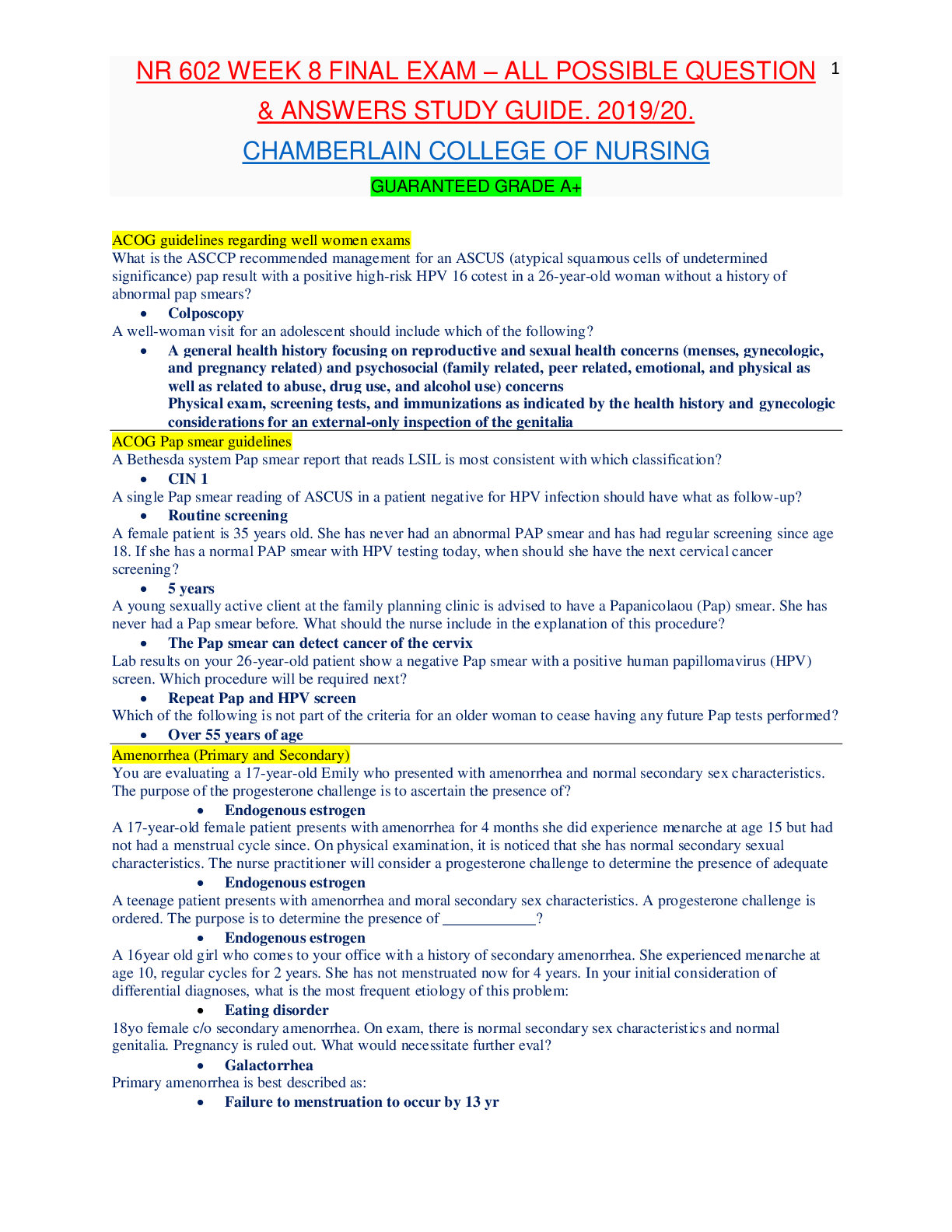
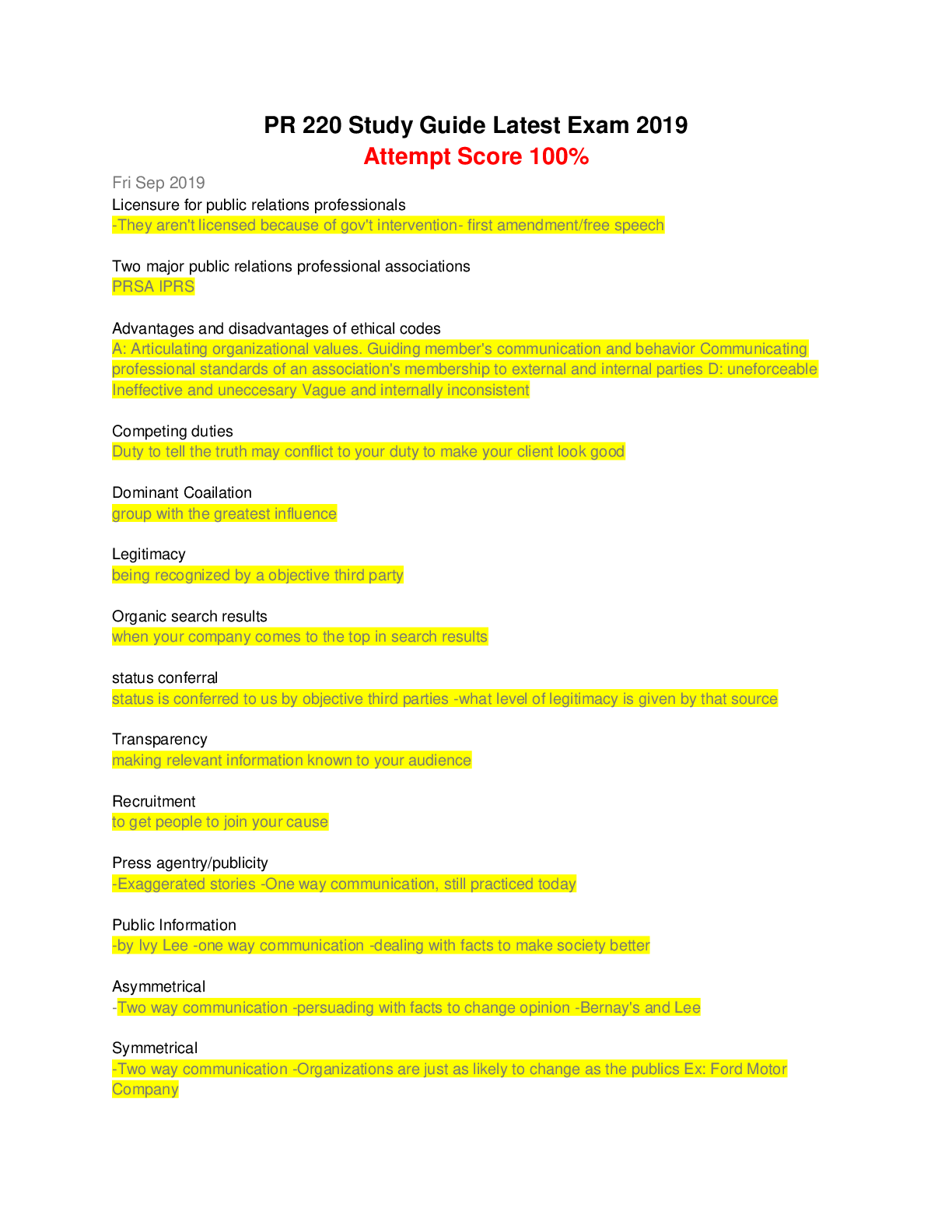

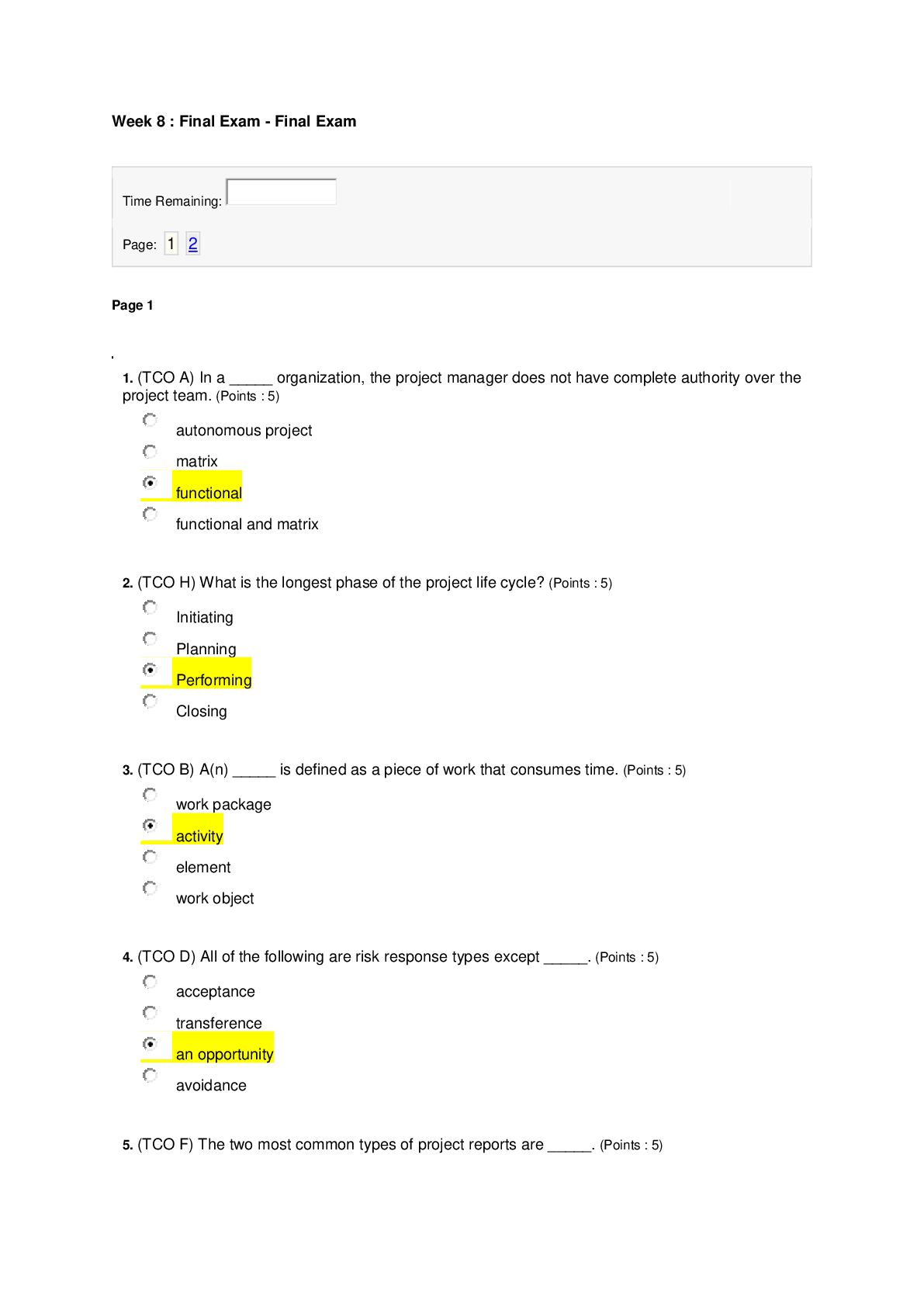
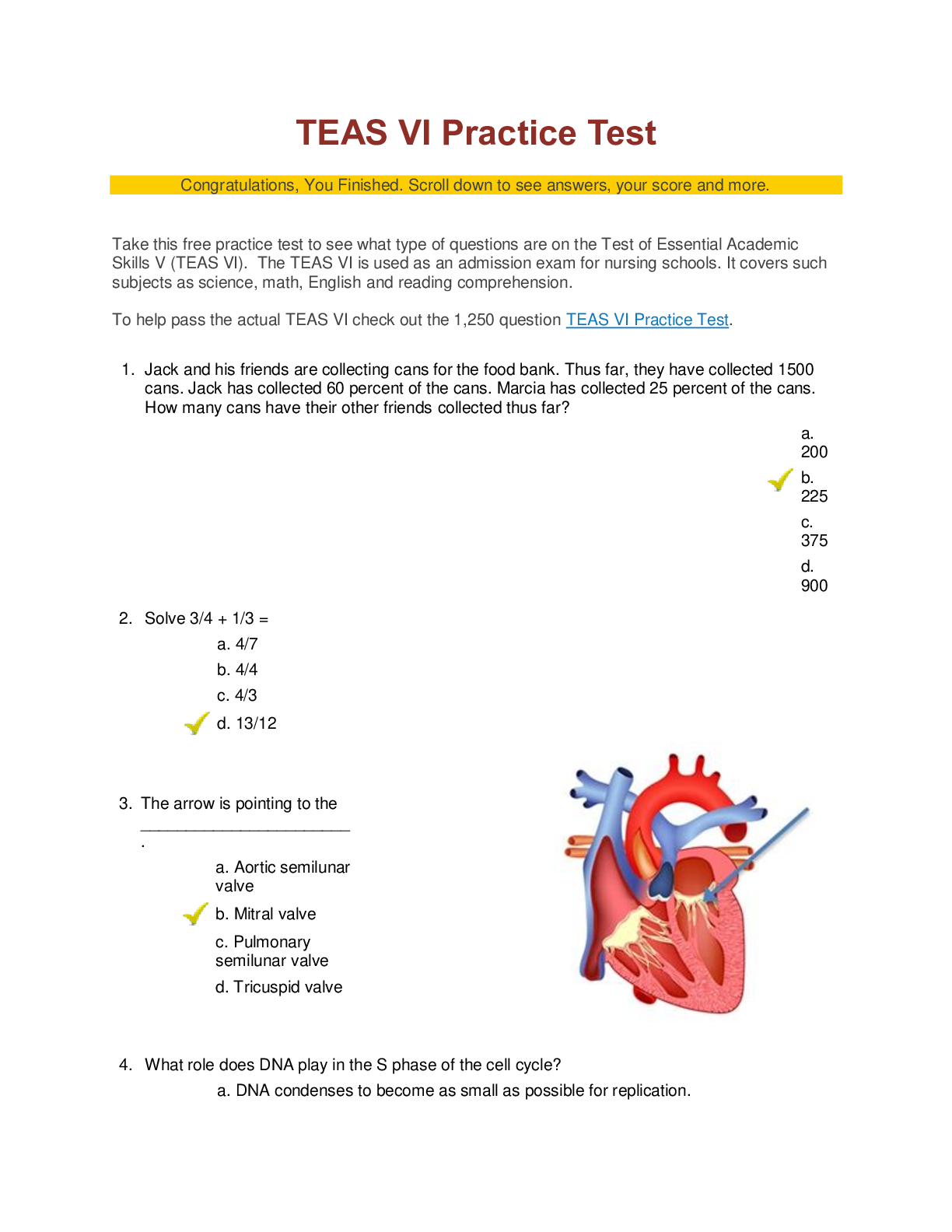

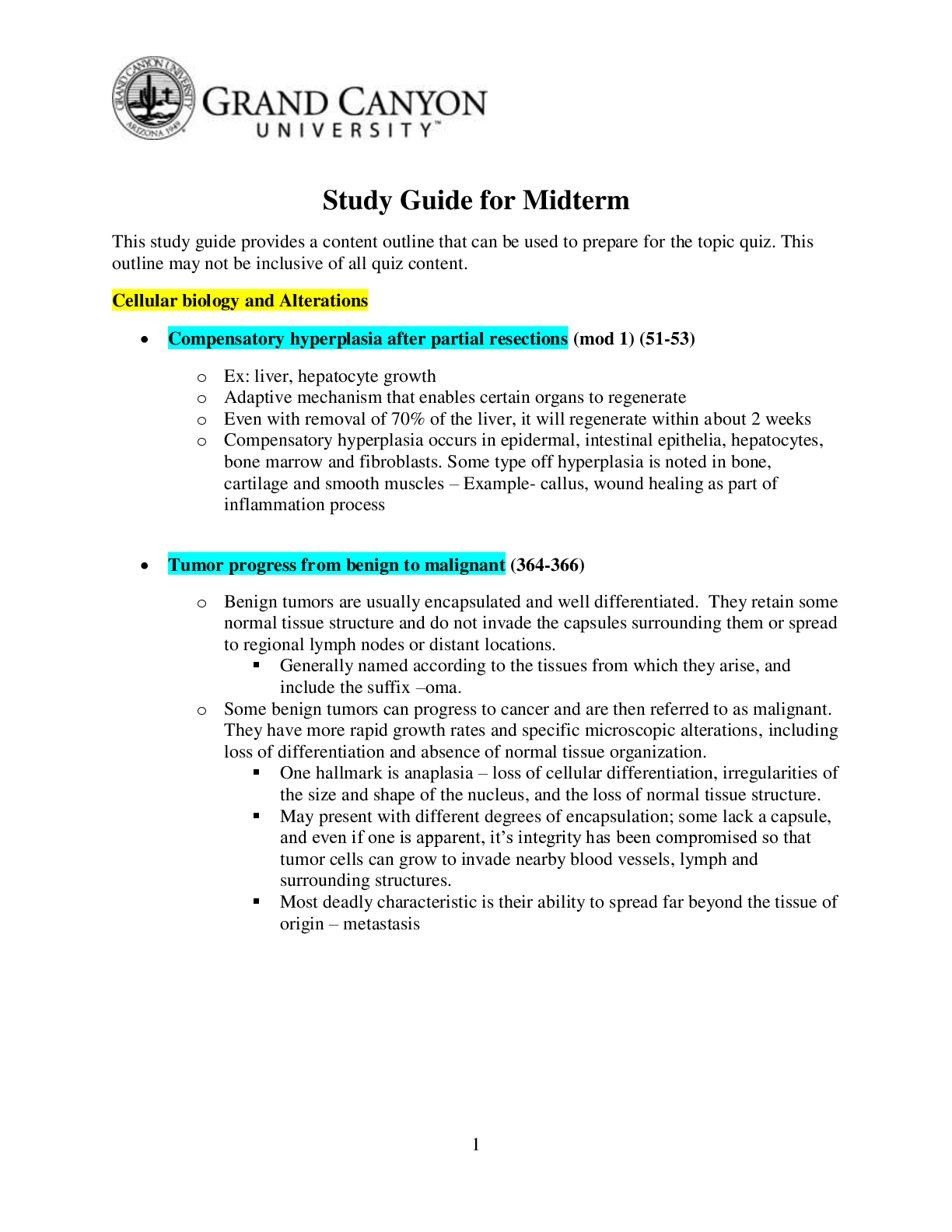


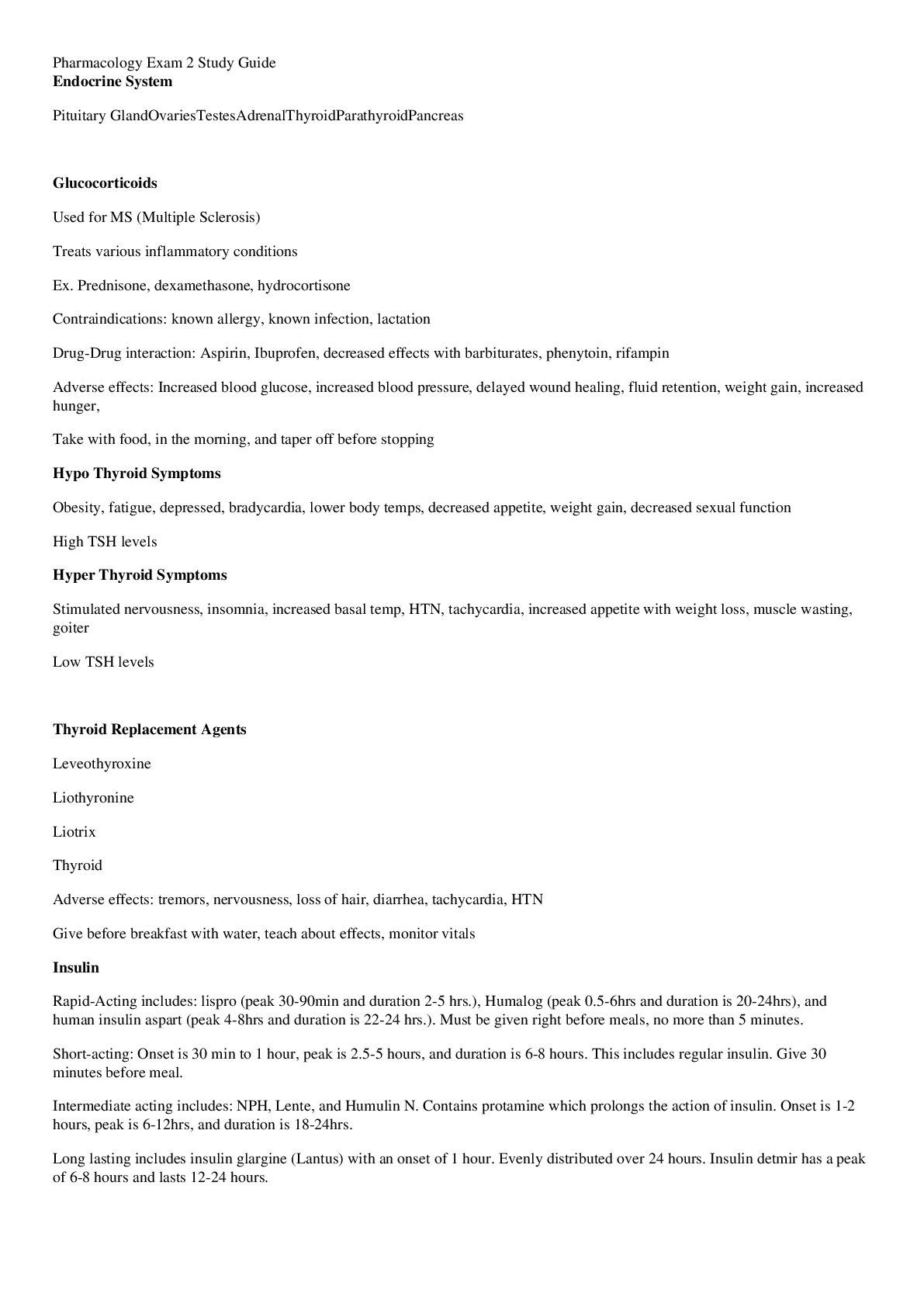
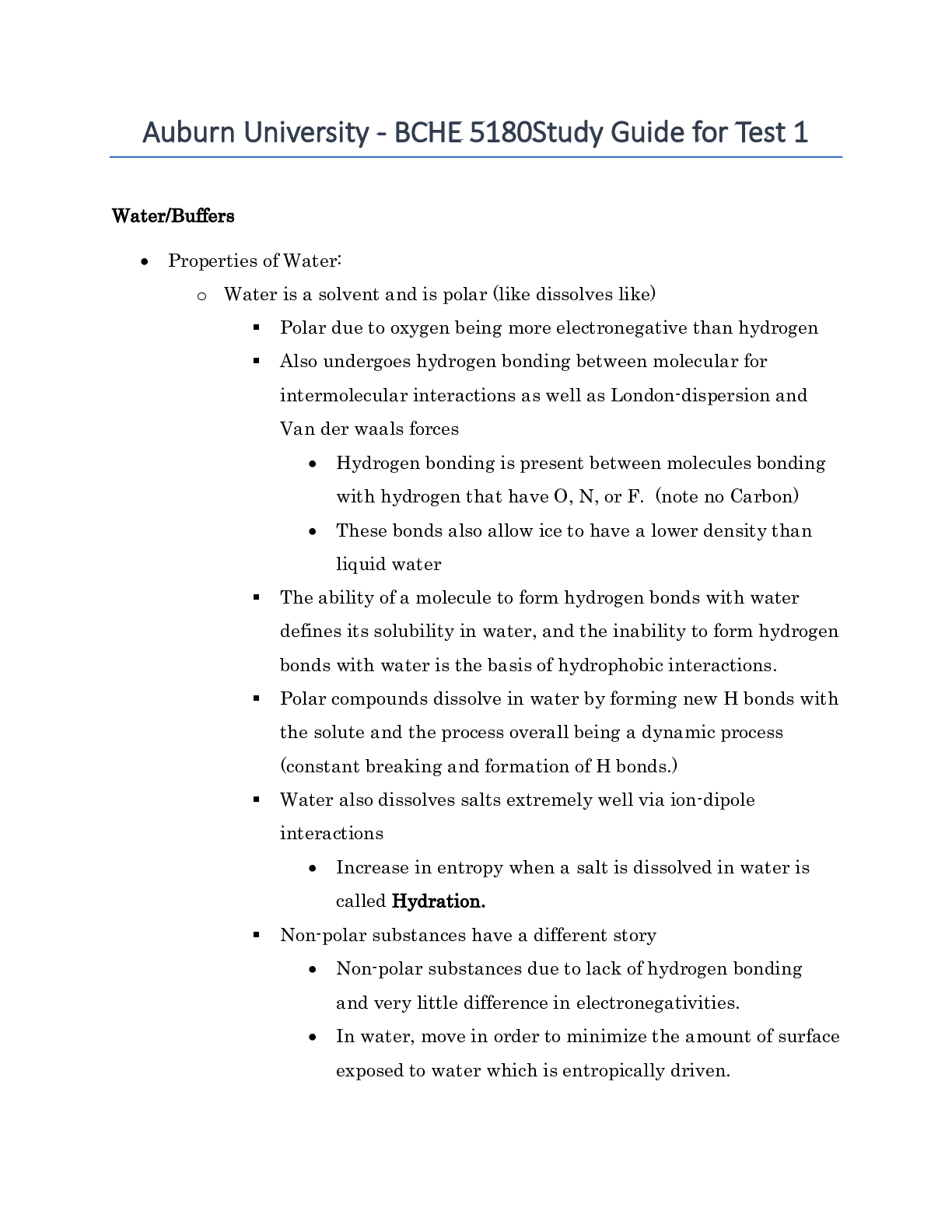
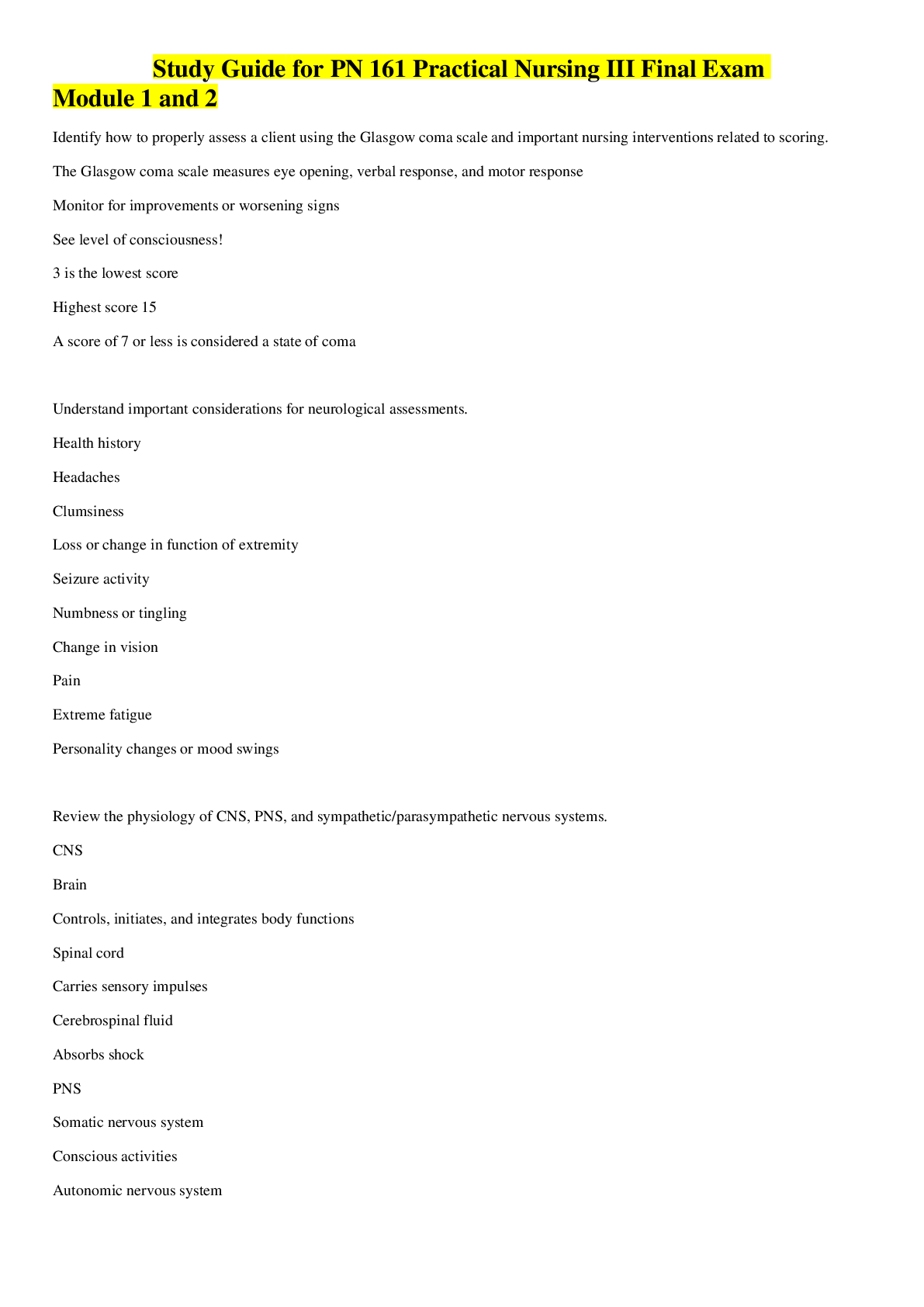
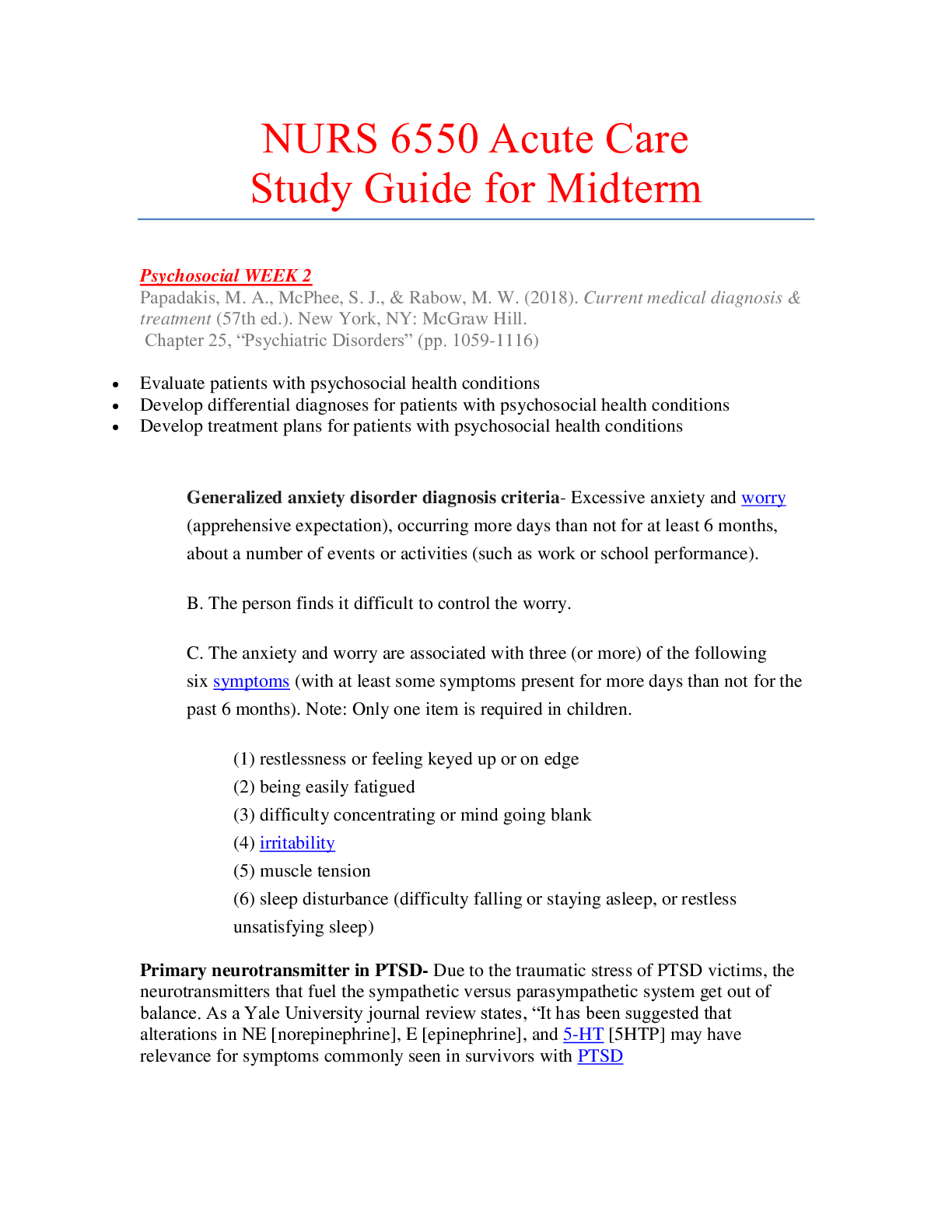

.png)
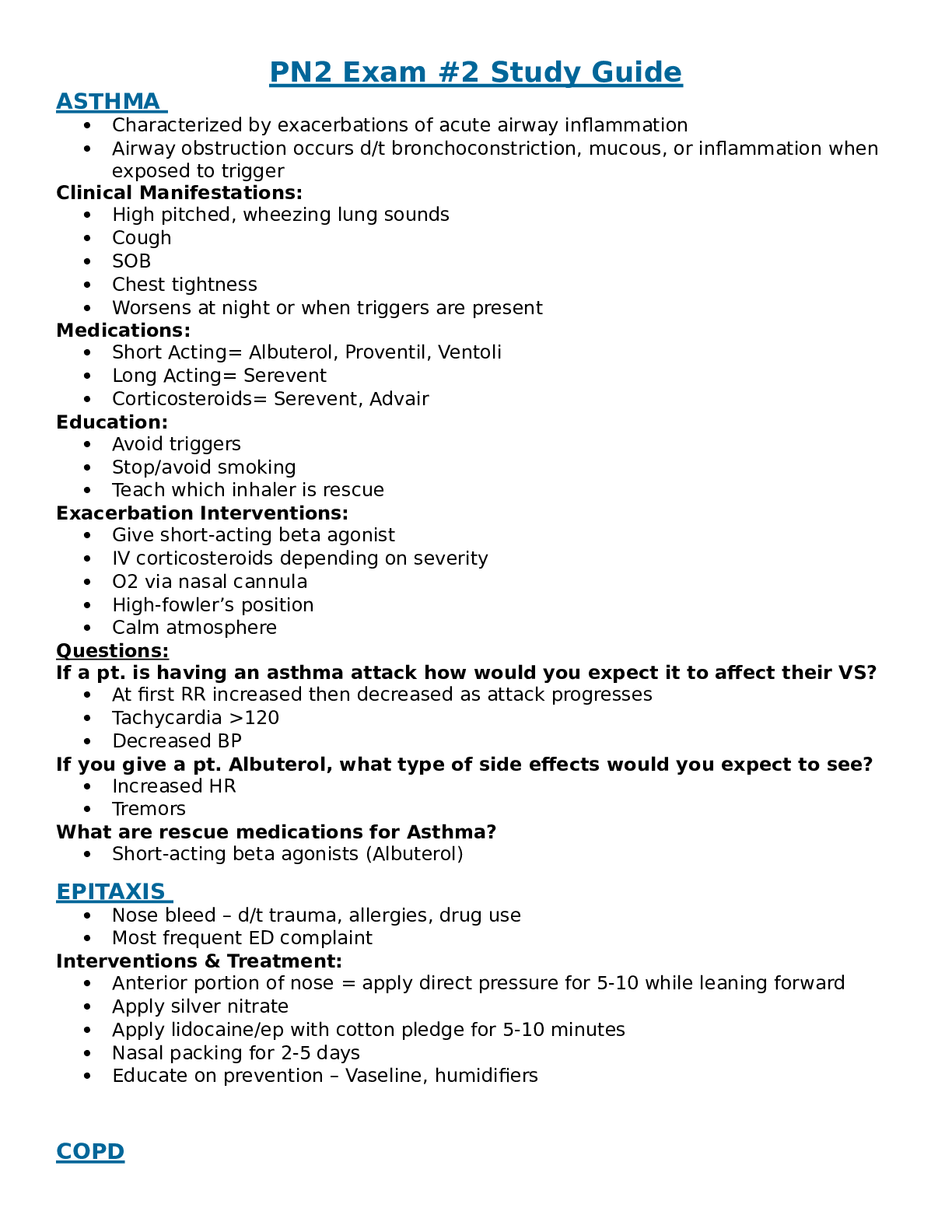
.png)


